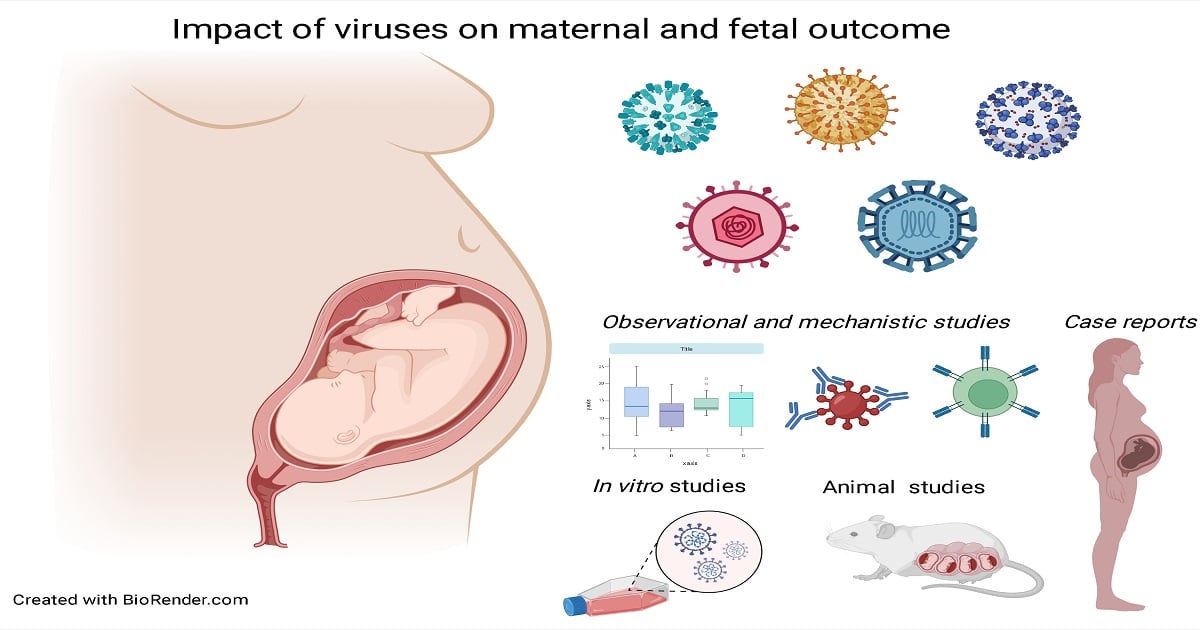- 3.3Impact Factor
- 6.8CiteScore
- 14 daysTime to First Decision
Impact of Viruses on Maternal and Fetal Outcome
This special issue belongs to the section “Viral Pathogens“.
Special Issue Information
Dear Colleagues,
A healthy pregnancy outcome relies on a robust maternal immune response and protection of the fetus and neonate against adverse effects of infection. There are many viruses such as CMV, HIV, Zika, SARS-CoV-2, Influenza, Hepatitis and HPV that can lead to adverse pregnancy outcomes by impacting maternal, fetal and neonatal health. Epidemiological, in vitro and ex vivo studies, including animal studies, have demonstrated associative and causal effects of many viruses on adverse maternal and fetal outcome. This Special Issue is focused on describing the role of viruses on adverse outcome, including mechanistic and observational studies, and explores the therapeutic options.
Research articles, review articles, short communications and case reports with literature reviews are welcomed for submission. For planned papers, it is recommended that a title and short abstract (approx. 100 words) is sent to the Editorial Office to confirm that the subject is within our scope.
Dr. Lynne Sykes
Prof. Dr. Graham Taylor
Guest Editors
Manuscript Submission Information
Manuscripts should be submitted online at www.mdpi.com by registering and logging in to this website. Once you are registered, click here to go to the submission form. Manuscripts can be submitted until the deadline. All submissions that pass pre-check are peer-reviewed. Accepted papers will be published continuously in the journal (as soon as accepted) and will be listed together on the special issue website. Research articles, review articles as well as short communications are invited. For planned papers, a title and short abstract (about 250 words) can be sent to the Editorial Office for assessment.
Submitted manuscripts should not have been published previously, nor be under consideration for publication elsewhere (except conference proceedings papers). All manuscripts are thoroughly refereed through a single-blind peer-review process. A guide for authors and other relevant information for submission of manuscripts is available on the Instructions for Authors page. Pathogens is an international peer-reviewed open access monthly journal published by MDPI.
Please visit the Instructions for Authors page before submitting a manuscript. The Article Processing Charge (APC) for publication in this open access journal is 2200 CHF (Swiss Francs). Submitted papers should be well formatted and use good English. Authors may use MDPI's English editing service prior to publication or during author revisions.
Keywords
- HIV
- SARS-CoV-2
- CMV
- hepatitis
- viruses
- preterm birth
- intrauterine growth restriction
- congenital infection
- antivirals
- inflammation

Benefits of Publishing in a Special Issue
- Ease of navigation: Grouping papers by topic helps scholars navigate broad scope journals more efficiently.
- Greater discoverability: Special Issues support the reach and impact of scientific research. Articles in Special Issues are more discoverable and cited more frequently.
- Expansion of research network: Special Issues facilitate connections among authors, fostering scientific collaborations.
- External promotion: Articles in Special Issues are often promoted through the journal's social media, increasing their visibility.
- e-Book format: Special Issues with more than 10 articles can be published as dedicated e-books, ensuring wide and rapid dissemination.

